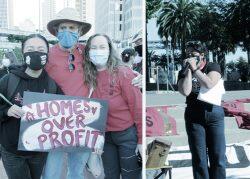 Tenant group calls for “debt strike” against one of San Francisco’s biggest property managers
Tenant group calls for “debt strike” against one of San Francisco’s biggest property managers
Trending
State’s sluggishness leaves landlords “holding the bag”
Latest figures show $4B still in hands of bureaucracy

Landlords in Los Angeles have been left “holding the bag” by the State of California’s sluggish administration of its $5.2 billion rent relief program, according to a trade association for apartment owners.
Relief for an approximate 75,000 households has been provided to tenants or landlords throughout the state, but cases involving hundreds of thousands more renters are still waiting.
That’s according to the latest figures on the state’s pandemic rent-relief program administered by the California Business, Consumer Services and Housing Agency, which released updated data this week.
Since the program debuted in March it has received 434,000 applications, according to the new data. The 75,000 applications that have so far led to relief payments account for a total disbursement of $898 million – less than one-fifth of the $4.5 billion that applicants have requested.
The continued sluggishness of the program more than 18 months since the onset of the pandemic has compounded the financial havoc facing many California renters and their landlords.
“I hear from landlords all the time that they have been left holding the bag,” said Dan Yukelson, executive director of the Apartment Association of Greater Los Angeles. “Now that we’re rounding the corner on a year and a half of [the pandemic], they’ve got to do something to get the money out faster.”
California’s rent relief program launched in March with a budget of $2.6 billion, which came from federal funding. The state expanded the budget to $5.2 billion this summer under a new law, AB 832, that promised to cover 100 percent of back rent for qualified applicants. Households qualify for the aid if they have been damaged financially by the pandemic and earn less than 80 percent of area median income, and the relief is disbursed directly to landlords under current procedures. The median household income is $80,000 in Los Angeles County, and varies up and down from that benchmark in other counties of the Southern California region.
California’s statewide program, the largest in the country, has been notoriously slow to make payouts throughout the pandemic. In recent months it faced logistical challenges as it absorbed some municipalities’ failing application systems, including a program run by the City of Los Angeles. The state agency in charge of the system has also been short-staffed, according to administrators, and spent resources retooling its website after civil rights groups filed a complaint in June over the site’s failure to adequately serve non-English speakers.
Under intense criticism, the state recently said it’s focused on speeding up the aid process. Russ Heimerich, a representative of the Business, Consumer Services and Housing Agency, last month said that new, streamlined applications should take applicants less than an hour.
“Our goal is from the time a completed application is submitted to the time a check goes out, to have that be 30 days or less,” Heimerich told KQED.
In the past two weeks, the state has disbursed checks to approximately 15,000 households, a somewhat quicker pace. The overall average payout is approximately $11,800, with the majority of aid going to extremely low-income households.
California’s blanket eviction ban expired at the end of September, but tenants who apply for rent relief aid remain protected through March. The state has said it intends to pay out all of the $5.2 billion allocated for rent relief.
Read more
 Tenant group calls for “debt strike” against one of San Francisco’s biggest property managers
Tenant group calls for “debt strike” against one of San Francisco’s biggest property managers




